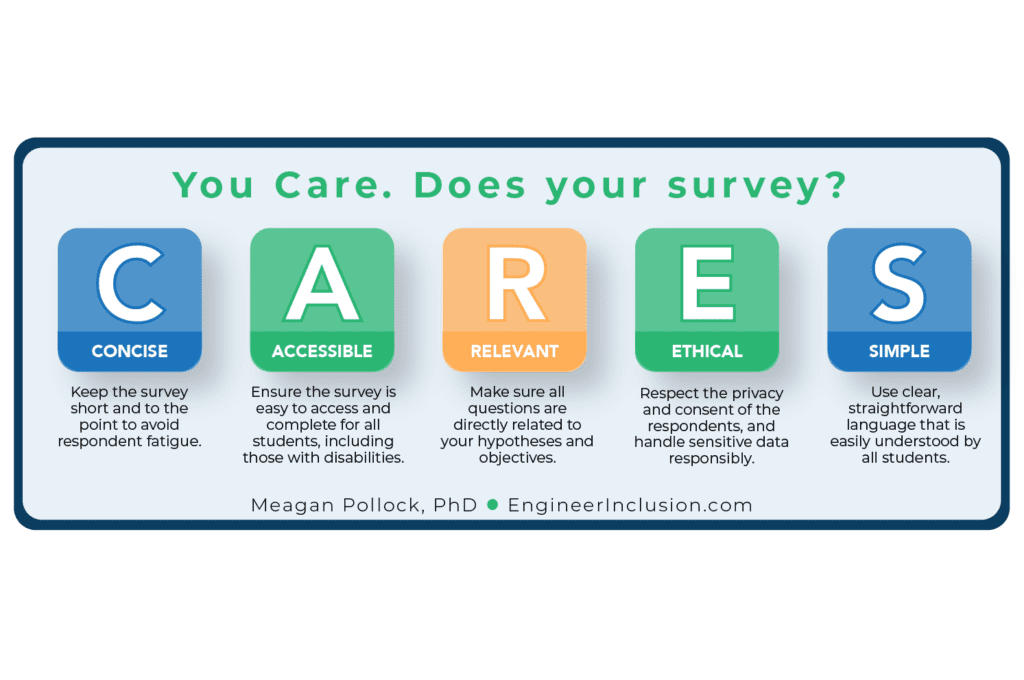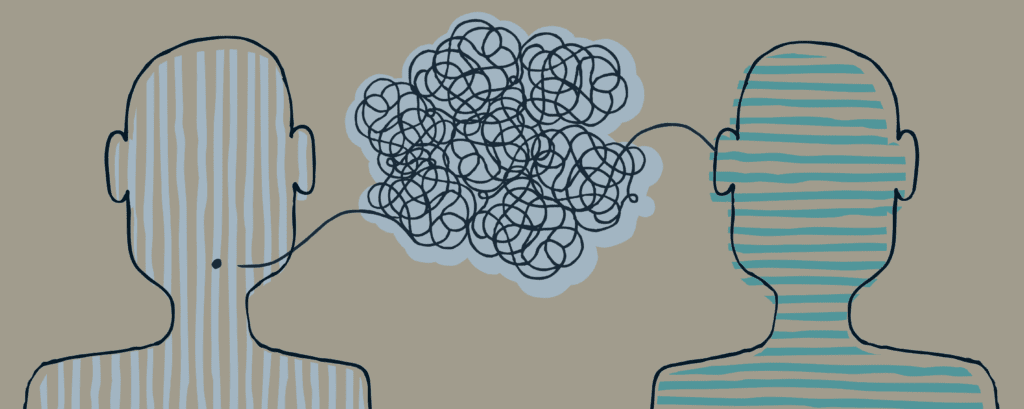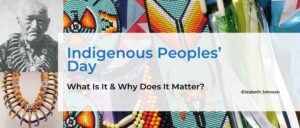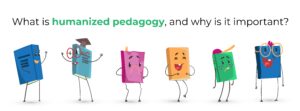Identifying key terms is a critical component of learning. On this page, you’ll find a glossary of key terms with definitions and terminology related to diversity, equity, and inclusion. We regularly update this page with new terms, and polish our definitions as needed. If you have feedback or want to request that we add a new term, please contact us!
Language both contributes to oppression and privilege and can also potentially be a tool of liberation. The power inherent in the ability to name oneself and others is tremendous. For these reasons, we encourage you to consider the following definitions as a rough starting point. Many of these terms and definitions will and should change over time.
White Privilege Conference, 2018
| Ableism | The system of oppression based on ability; assumes disabled people as flawed, insufficient, and inferior. Includes assumptions about what is “normal” and results in the marginalization of the disabled. In brief, it is the unearned privilege afforded to non-disabled people. |
| Asexual | An adjective used to describe people who do not experience sexual attraction (e.g., asexual person). |
| Asset Perspective | Asset perspective is when students’ cultural differences are seen as beneficial to the learning environment, as opposed to a deficit perspective, where cultural differences are perceived as detrimental to the learning environment. |
| Bias | Bias is a prejudice in favor of or against one thing, person, or group compared with another, usually in a way considered to be unfair. As a verb, bias causes one to feel or show inclination or prejudice for or against someone or something, in explicit or implicit ways, and bias occurs in more than just our communication. Bias is embedded in ideologies, institutions, and ways of knowing and doing. Implicit biases and prejudices are often unrecognized and may not align to one’s declared beliefs and values. Prejudices, stereotypes, and consequently bias often operate in combination to influence our behavior. EXPLICIT BIAS refers to the attitudes or stereotypes that affect one’s understanding, actions, and decisions in a conscious manner. IMPLICIT BIAS refers to the attitudes or stereotypes that affect one’s understanding, actions, and decisions in an unconscious manner. |
| Bisexual | A person who has significant romantic, emotional, physical, and/or sexual attractions to both men and women, but not necessarily simultaneously or equally. Included in the LGBTQ acronym. |
| Cisgender | Denoting or relating to a person whose sense of personal identity and gender corresponds with their birth sex |
| Code– Switching | Code–switching is the practice of shifting the languages you use or the way you express yourself in your conversations and environments. Decoding is the awareness and deciphering of difference cultural codes. Read the NPR article “Five Reasons Why People Code-Switch” to learn more about this practice at n.pr/Xyakij |
| Culture | The word culture implies the integrated patterns of human behavior that includes thoughts, communications, actions, customs, beliefs, values, and institutions of racial, ethnic, religious, or social groups. |
| Cultural Capital | The accumulation of knowledge, behaviors, and skills (education, intellect style of speech, style of dress, etc.) that promote social mobility in a stratified society. Cultural capital provides social advantage and power to individuals whose cultures reflect dominant social norms. |
| Cultural Competence | Cultural competence is the ability to understand one’s own and others’ cultural backgrounds and values, to be aware of how different cultural backgrounds create different perspectives (Gay, 2002; Harrison et al., 2010), and to use knowledge and strategies to allow culturally diverse people to successfully learn and work together (Cross et al., 1989). |
| Cultural Mismatch | Cultural mismatch occurs when gaps exist between students and educators in regard to their racial, cultural, ethnic, social and linguistic identities. Often times these gaps lead to misunderstandings that harm students. |
| Culturally Responsive Teaching | Culturally Responsive Teaching (CRT) is a teaching style where educators learn the cultural backgrounds, lived experiences, and learning styles of their students in order to better reach and teach them. In CRT, educators bring student identities to the center. (Geneva Gay) |
| Disability | Depending on the model informing the definition, (i.e., medical, social, economic, feminist, legal, social justice, etc.) social, historical, political, and mythological coordinates impact the actual meaning of disability and disabled people as objects of institutional discourse. |
| Diversity | Diversity means variety. In theory, it’s the inclusion of different types of people in a group or organization (such as people of different races or cultures). However simply inviting people in, isn’t inclusion. Typically, when we think of diversity from an organizational standpoint, we think of race, gender, sexuality, (dis)ability, neurodiversity, or personality, to name a few distinguishing identities. Diversity can be represented by intersecting identities, different ways of knowing and doing, and cultural norms and values. |
| Dominant Group | Dominant group is that which holds the most power in a given society, while subordinate groups, also sometimes called target groups, are those who lack power compared to the dominant group. |
| Ethnicity | A social construct that divides people into smaller social groups based on characteristics such as shared sense of group membership, values, behavioral patterns, language, political and economic interests, history and ancestral geographical base. (Truth Racial Healing and Transformation Implementation Guide; Maurianne Adams, Lee Anne Bell, and Pat Griffin, editors. Teaching for Diversity and Social Justice: A Sourcebook. New York: Routledge.) |
| Equity | Equity is the dismantling of systemic and institutional barriers, and giving people what they need to succeed. In education, the term equity refers to the principle of fairness. While it is often used interchangeably with the related principle of equality, equity encompasses a wide variety of educational models, programs, and strategies that may be considered fair, but not necessarily equal. Equity compensates for systemic inequalities, and it is an explicit effort to level the playing field with the goal of reaching equality. |
| Food Insecurity | Food insecurity is the state of being without reliable access to a sufficient quantity of affordable, nutritious food. In 2017, an estimated 1 in 8 Americans were food insecure, equating to 40 million Americans including more than 12 million children. |
| Funds of Knowledge | Funds of knowledge refers to the knowledge that develops from one’s home culture. The term originates from Luis Moll, who defines it as “historically accumulated and culturally developed bodies of knowledge and skills essential for household or individual functioning and well–being” (Moll et al., 1992, p. 133). |
| Gay | A term used to describe an individual who is emotionally, physically, and/or sexually attracted to members of the same sex. This term is often used in relation to men but also used in relation to anyone who does not identify as heterosexual or straight. Included in the LGBTQ acronym. |
| Gender | A socially constructed system of classification that ascribes qualities of masculinity and femininity to people. |
| Gender identity | A person’s internal sense of themselves as a specific gender. |
| Gender Expression/ Image/ Display | The external presentation of self as gendered through cultural identifiers/markers such as clothing, behaviors, etc. |
| Genderqueer | A self-identifying term for someone who rejects the male/female gender binary in favor of a more fluid, nontraditional identity which merges or blurs characteristics of gender and gender norms. |
| Hetero- sexism | The system of oppression which assumes heterosexuality as the norm, favors heterosexuals, and denigrates and stigmatizes anyone whose gender or sexual behavior is considered non-heterosexual. |
| Hidden Curricula | In contrast to the formal curriculum that is intentionally taught, hidden or null curricula are the unofficial, unwritten, (often) unintended lessons, values, cultural messages and perspectives that are tacitly learned. |
| Humanizing Pedagogy | According to Salazar (2013), a “humanizing pedagogy” is additive, as opposed to focusing on deficits; it utilizes students’ prior knowledge and connects it to new learning thereby legitimizing students’ home languages and cultures. In such a pedagogy, students are viewed as experts. |
| Inclusive Leadership | Randel et al.’s framework conceptualizes “inclusive leadership as a set of leader behaviors that are focused on facilitating group members feeling part of the group (belongingness) and retaining their sense of individuality (uniqueness) while contributing to group processes and outcomes.” |
| Implicit Bias | Implicit bias refers to the attitudes or stereotypes that affect one’s understanding, actions, and decisions in an unconscious manner. These are often unrecognized and may not align to one’s declared beliefs and values. Visit implicit.harvard.edu to take the Implicit Association Test (IAT) and discover your implicit biases. Awareness is the first step! |
| Inclusion | Inclusion is the practice or policy of providing equal access to opportunities and resources for people who might otherwise be excluded or marginalized. When we focus on inclusion we remove institutional barriers, seek and celebrate diversity, and create a culture and climate that allows every person to be their true, authentic self. |
| Intersectionality | An approach largely advanced by women of color, arguing that classifications such as gender, race, class, and others cannot be examined in isolation from one another; they interact and intersect in individuals’ lives, in society, in social systems, and are mutually constitutive. The interconnected nature of social categorizations can create overlapping and interdependent systems of discrimination or advantage. |
| Intersex | An umbrella term describing people born with reproductive or sexual anatomy and/or a chromosome pattern that can’t be classified as typically male or female. Avoid the outdated and derogatory term “hermaphrodite.” |
| Latinx | Pronounced “La-TEEN-ex”, is a non-gender specific way of referring to people of Latin American descent. Other commonly known ways of referring to people of Latin American descent are Latinos, Latina, Latin@, Latino. The “x” at the end replaces “o” and “a” which are gendered suffixes, it moves beyond terms like Latino/a & Latin@, which still reinforce a gender binary. |
| Lesbian | A term used to describe a woman whose primary romantic, emotional, physical, and sexual attractions are to other women. Included in the LGBTQ acronym. |
| LGBT, LGBTQ+ and LGBTQIA | These are umbrella terms used to refer to the community as a whole. The letters stand for Lesbian, Gay, Bisexual, Transgender, Queer, Questioning, Intersex, Asexual, and Allied (see separate definitions for these words). For a comprehensive list of terminologies see here. |
| Marginalization | Marginalization is the treatment of a person, group, or concept as insignificant or peripheral. Marginalized groups refer to individuals who are consistently confined to the lower or peripheral edges of society or groups, because they are commonly seen as different from perceived norms and dominant cultures. They often experience disadvantage and discrimination that stem from systemic social inequalities and injustices. However, unintentional microinequities in interpersonal relationships can also cause marginalization. For example, women and people of color are marginalized groups in STEM careers, and, as a result, underrepresented. |
| Micro- aggressions | A type of micro-message; See micro-messages. |
| Micro- messages | Micromessages are small, subtle, unconscious messages that are sent and received when communicating with others. Micro-messages can be either positive “micro–affirmations” or negative “micro–inequities” that communicate value to an individual. Micro-messages are relayed through not only words but also nonverbal communication, contextual cues in the classroom and school, and written feedback. |
| Multicultural Education | Multicultural education looks at acknowledging, recognizing, and incorporating diverse cultures into institutions on a large scale. Nieto (1996) defines it as “a process of comprehensive school reform and basic education for all students…Multicultural education permeates the curriculum and instructional strategies used in schools, as well as the interactions among teachers, students, and parents, and the very way that schools conceptualize the nature of teaching and learning ” (p. 307). Although multicultural education is similar to CRT, CRT focuses more narrowly on how educators can acknowledge and utilize the diverse cultures of their students in their practice. |
| Pansexual | The sexual, romantic, or emotional attraction towards people regardless of their sex or gender identity. Pansexuality rejects the gender binary. |
| People first language (PFL) | Puts the person before the disability. “People with disabilities” acknowledges that individuals with disabilities are people first and not their diagnosis or disability. |
| Person of Color | Person of color refers to an individual who is not white or of European parentage. It is best to use the phrasing people of color, students of color, communities of color, etc. instead of terms like racial “minorities” or “nonwhite” when describing people. The latter terms are white-centric, and are terms that marginalize people of color. When possible, it is better to specifically identify people based on their race or ethnicity, such as American Indian, Alaskan Native, Asian, Black, African American, Hispanic, Latino/a, Native Hawaiian, Pacific Islander, or White, recognizing that many people hold multiple racial identities. It is also important to note that not all Black people in the U.S. are, or identify as, African Americans. The racial identity of black immigrant groups such as Africans or Afro-Caribbeans can vary, so when in doubt, ask. Learn more: The Journey From ‘Colored’ To ‘Minorities’ To ‘People Of Color’ (NPR); The Changing Definition of African-American (Smithsonian) |
| Privilege | Privilege is a special right, advantage, or immunity granted or available only to a particular person or group. Privilege is characteristically invisible to people who have it. People in dominant groups may believe that they have earned the privileges they enjoy or that everyone could access these privileges if only they worked to achieve them. However, privileges are unearned, and they are granted to people in the dominant groups whether they want those privileges or not. Privilege operates on personal, interpersonal, cultural, and institutional levels, thus creating systems of advantage. |
| Positionality | Positionality is the social and political context that creates your identity in terms of race, class, gender, sexuality, and ability status. Positionality also describes how your identity influences, and potentially biases, your understanding of and outlook on the world. |
| Queer | A term people often use to express fluid identities and orientations. Often used interchangeably with “LGBTQ.” Included in the LGBTQ acronym. The Q in LGBTQ can also stand for Questioning. |
| Race | A social construct that divides people into groups based on factors such as physical appearance, ancestry, culture, history, etc; a social, historical and political classification system. |
| Racism | A system of oppression involving systematic subordination of members of targeted racial groups by those who have relatively more social power. This subordination occurs at the individual, cultural and institutional levels. |
| Restorative Justice | Restorative justice is a theory of justice that emphasizes repairing the harm caused by criminal behavior. It is best accomplished through cooperative processes that include all stakeholders. This can lead to transformation of people, relationships and communities. Visit restorativejustice.org to learn more. |
| Safe Zone | A safe zone is a place that is marked with a logo to indicate that it is a safe place for marginalized students (particularly the LGBTQ+ community) where they will be supported, understood, and listened to. Visit thesafezoneproject.com to find free resources and curriculum. |
| Self– Efficacy | Self–efficacy is one’s belief that they can be successful in a specific task or challenge, and answers the question: “Can I do this?” An individual with high self–efficacy is more likely to adopt and commit to more challenging goals, and an individual with low self–efficacy is more likely to avoid challenges. |
| Social Capital | Social capital is the networks of relationships among people who live and work in a particular society, enabling that society to function effectively. Social capital includes the resources inherent in social relations such as trust, norms, reciprocity, and knowledge from exposure to certain experiences. |
| Social Class | Social class (as in upper class, middle class, lower class, working class) refers to people’s socioeconomic status, based on factors such as wealth, occupation, education, income, etc. |
| Stereotype | Stereotypes are a widely held but fixed, oversimplified, and generalized image or idea of a particular type of person or thing, including personal traits or circumstantial attributes. Stereotypes can become ideological beliefs held within one’s culture that lead to assumptions about characteristics, behaviors, and social norms. “The problem with stereotypes is not that they are untrue, but that they are incomplete. They make one story become the only story.” Chimamanda Ngozi Adichie, The Danger of the Single Story, TED Talk |
| Stereotype Threat | A socially premised psychological threat that arises when one is in a situation or doing something for which a negative stereotype about one’s group applies (Steele & Aronson, 1995). Awareness of negative stereotypes negatively impacts performance of members of marginalized groups in certain situations. |
| Systems of Oppression | Oppression is the combination of prejudice and power which creates a system that discriminates against some groups and benefits other groups. Examples of these systems are racism, sexism, heterosexism, ableism, classism, ageism, and anti-Semitism. Systems of oppression enable dominant groups to exert control over non-dominant groups by limiting their rights, freedom, and access to basic resources such as health care, education, employment, and housing. There are four types of oppression: ideological, interpersonal, institutional, and internalized. These systems overlap and interact. Systems of oppression are designed by people, and upheld by people. |
| Trans- gender | An umbrella term for people whose gender identity and/or expression is different from cultural expectations based on the sex they were assigned at birth. Being transgender does not imply any specific sexual orientation. Therefore, transgender people may identify as straight, gay, lesbian, bisexual, etc. Included in the LGBTQ acronym. |
| Universal Design | The design of products and environments to be usable by all people, to the greatest extent possible, without the need for adaptation or specialized design (Ron Mace). |
| White Privilege | Institutional set of benefits, including greater access to resources and power, bestowed upon people classified as white. |
| White Supremacy | White supremacy is the assumption or theory that whites are superior to all other races and should be in power and control. It is a structural system built into the founding of our nation, our culture and our institutions and is still in place today. |
The definitions on this page are derived from multiple resources including:
- White Privilege Conference (see page 10-11)
- ASU-Intergroup Relations Center Glossary
Citations
Cross, T. L., Bazron, B. J., Dennis, K. W., & Isaacs, M. R. (1989). Towards a Culturally Competent System of Care: A Monograph on Effective Services for Minority Children Who Are Severely Emotionally Disturbed.
Gay, G. (2002). Preparing for culturally responsive teaching. Journal of Teacher Education, 53(2), 106–116.
Harrison, L., Carson, R. L., & Burden, J. (2010). Physical Education Teachers’ Cultural Competency. Journal of Teaching in Physical Education, 29(2), 184–198.
Moll, L. C., Amanti, C., Neff, D., & Gonzalez, N. (1992). Funds of knowledge for teaching: Using a qualitative approach to connect homes and classrooms. Theory Into Practice, 31(2), 132–141.
Nieto, S. (1996). Affirming diversity: the sociopolitical context of multicultural education (2nd ed.). White Plains, N.Y: Longman Publishers USA.
Randel, A. E., Galvin, B. M., Shore, L. M., Ehrhart, K. H., Chung, B. G., Dean, M. A., & Kedharnath, U. (2018). Inclusive leadership: Realizing positive outcomes through belongingness and being valued for uniqueness. In (Vol. 28, pp. 190-203).
Steele, C. M., & Aronson, J. (1995). Stereotype Threat and the Intellectual Test Performance of African Americans. Journal of Personality and Social Psychology, 69(5), 797–811.











